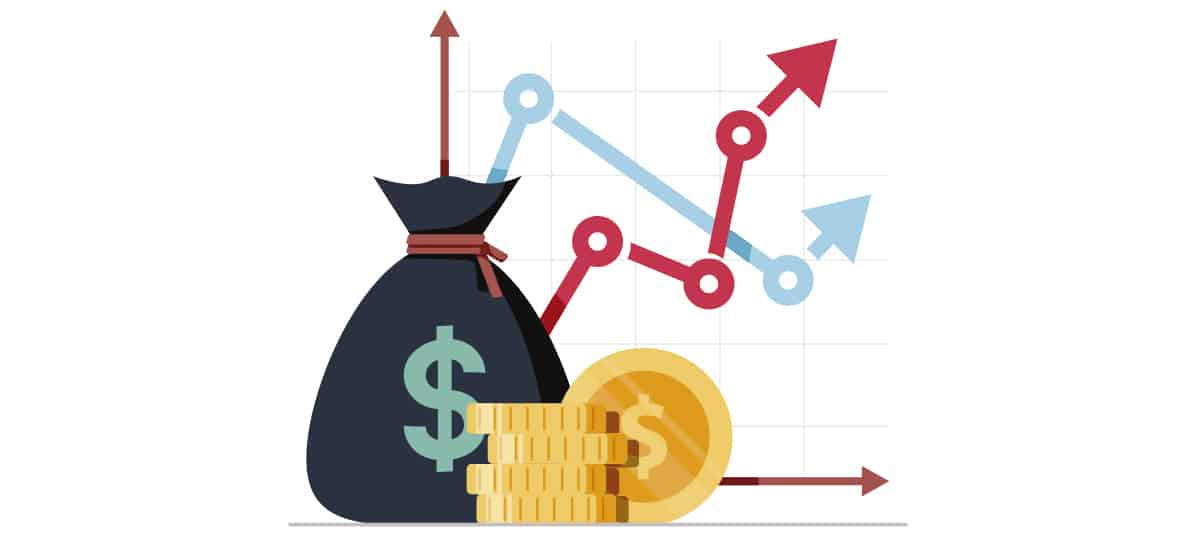What are the costs of investing?

Zero-cost investments are a rarity in the financial world. With a few exceptions, such as the majority of deposits currently offered, there will always be a cost to investing.
The difference between some investments and others is that the costs associated with the investment are not always as clear and easy to see at first glance.
Why should you be interested in understanding the fees and commissions involved in investing? Firstly, because any extra commission you pay is less benefit for you, as these commissions are subtracted from the return you get on your money.
Secondly, because it is one of the few aspects of your investments that you can actually control. Another is how much money to invest.
The cost of investing: the types of expenses you incur
Just as there is always a risk in every investment, there are also a number of costs that are common to most products. As a starting point, the costs of an investment can be divided into the following
- Commissions: these are normally stated explicitly and it is usual for the company to tell you about them. They are a fixed percentage or expense that is charged for things such as managing your money, administration, opening or closing a stock market transaction, underwriting a fund, custody of shares, and so on.
- Operating costs: this is an implicit cost in the operation itself and varies according to the product. For example, an investment fund that invests in shares will have to pay stock market fees when buying and selling shares; or a unit-linked fund will have to pay the management, subscription and redemption fees of the investment funds in which it invests.
From this point, there are other fixed and variable fees (for example, the success fee), expenses that have a specific amount and others that are calculated as a percentage of the money invested or of the transaction itself, expenses that are easy to understand and justify and others that are complicated to comprehend.
In fact, only some of the expenses and costs of investments are exactly the same in every product. This is why funds have a different fee structure to pension plans, and even in the stock market there will be different costs if you invest in shares or CFDs, for example.
The most common investment commissions
Cupcakes or muffins? Pepsi or Coca-Cola? These are basically the same thing with a different name, and that is exactly what happens with many of the costs associated with investment.
Each investment product has its own specific cost and commission structure, but many of them are similar, they just have different names.
As you will see below, with a fund you pay a subscription fee, while with a share you have a purchase order fee. In other words, it is the same type of expense, just dressed up differently.
So what are these recurring costs and commissions? Let’s take a look!
Maintenance fee
This cost may have different names depending on the investment product, but they are all the same thing. It is money that you have to pay for holding the capital in your chosen investment tool.
When investing in the stock market, this will be the maintenance or custody fee for stocks, while in a mutual fund or pension plan, we talk about a deposit fee, which is also charged by the depositary institution.
Buying/selling commission
Another of the commissions that is almost universal in nature. It is explicitly or implicitly present in virtually every investment you make in the market.
In the case of stock market investments, the broker will charge a commission on the amount of your transaction. For example, if you invest 1,000 euros and the commission is 0.3%, you will pay a 3 euro commission. This percentage usually decreases as the amount of the transaction increases.
To this must be added the stock market fee, which is paid to the stock exchange for contracting and liquidating your holdings (when you buy or sell a share).
With an investment fund, you will not pay a buying and selling fee, but you may be charged a subscription and redemption or transfer fee, which is essentially the same thing, so there is usually a cost to investing and divesting.
Management fee
This is money you pay to the entity in charge of managing your investments. In an investment fund, it is the money you pay to the fund manager, who creates and implements the investment strategy.
With a pension plan, something similar happens, since at the end of the day the plan is investing your savings through a pension fund.
This commission also applies to other products such as Unit Linked products and even PIAS, where there is a management team in charge of selecting and deciding on which funds and assets to invest in. The same applies to managed fund portfolios, such as the model portfolios of the various financial institutions or roboadvisors.
Depending on the product in question, this fee may be charged as a percentage of the money invested or as a success fee. The first model is the most common and means that the fund manager will always be paid for their services, whether you make or lose money.
In the second model, the fund manager or advisor will only be charged if the investments are profitable, in which case they will take a percentage of the return.
To these three basic commissions are added others that may be specific to each investment product. Examples are insurance premiums in PIAS, spreads in CFDs, with contracts for differences where you invest without buying any assets or the charges that may be incurred when investing in certain stock market and Forex (the foreign exchange market) products.
There is one more thing you should know about these investment fees and expenses: they are cumulative.
To make it easier to understand, a variable income investment fund has to pay brokerage fees and other stock market investment fees, while a unit-linked fund has to bear the costs of the investment funds in which it invests, which in turn cover the stock market fees that we have already mentioned.
All of these fees and commissions are lost returns that undermine the effect of compound interest on your investments. In addition, they can be difficult to detect, as in some cases they are subtracted directly from the value of the investment. For example, the management fee of a fund is subtracted when calculating the net asset value of your shares.
Another issue involves buying/selling commissions, which are easier to detect and you can calculate their real impact.
Is it possible to determine the real cost of your investments?
The answer is yes, although it is not always easy to find out. The degree of difficulty depends on each product.
For example, it is relatively easy to determine the total costs involved in a fund. To find this out, you need to look up your TER or Total Expense Ratio. This indicator is the sum of the fund’s fees plus operating costs and a good way to compare how much your fund costs.
Next, if the fund charges a subscription fee, you should also take this into account when planning your contributions. The reason is that each time you invest, you will pay a commission that you could avoid by investing in another fund.
The same is true for investing in shares. You can find out the cost of investing by looking at your broker’s fees. From that point on, it is your own trading and the number of transactions you make that determine how much you pay in commissions.
The golden rule when in doubt is to always ask for the net return the product offers you, deducting the costs inherent to the investment tool.
Can these expenses be deducted from the investment?
There is one final cost common to all investments: taxes. Whenever you invest, you will always have to pay your share to the tax authorities when you file your tax return. The specific taxation will depend on what you invest in and how you invest, as explained here: how investment taxes work.
These taxes also take into account the costs of the investment. When filing your tax return, you can deduct the costs associated with the investment in order to calculate the return you obtain for tax purposes.
Specifically, the tax authorities allow you to deduct the following expenses:
- Administration and deposit costs
- Buying and selling commissions and brokerage fees.
This means that you only pay for the return you get without the costs you have incurred.


